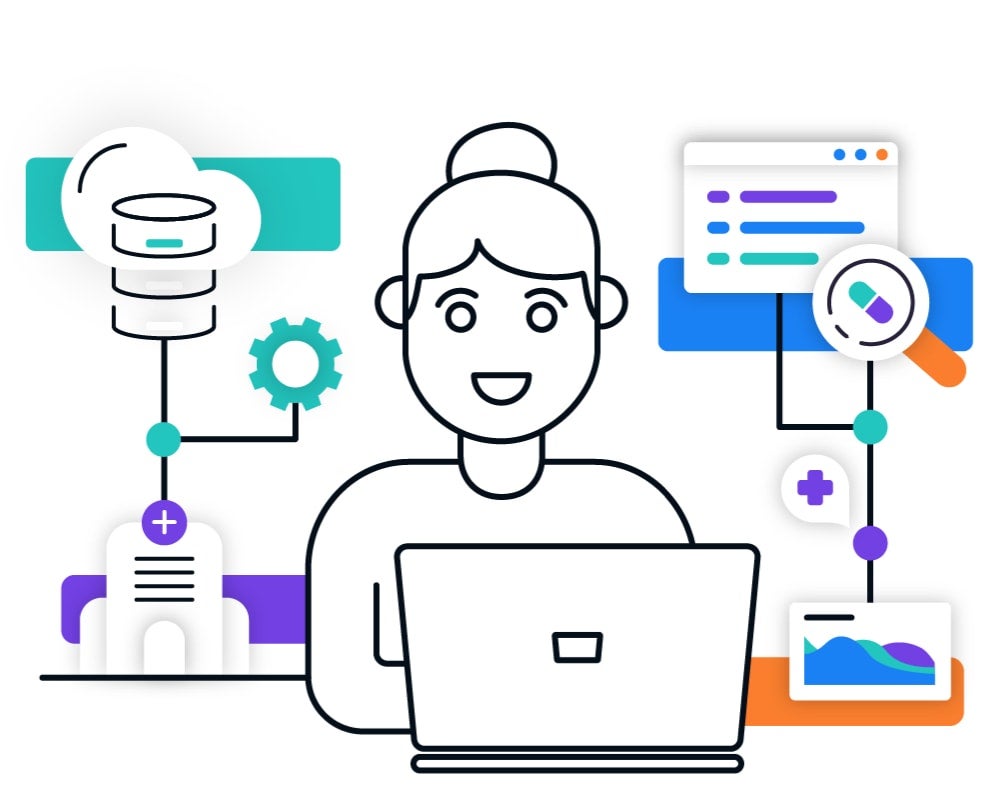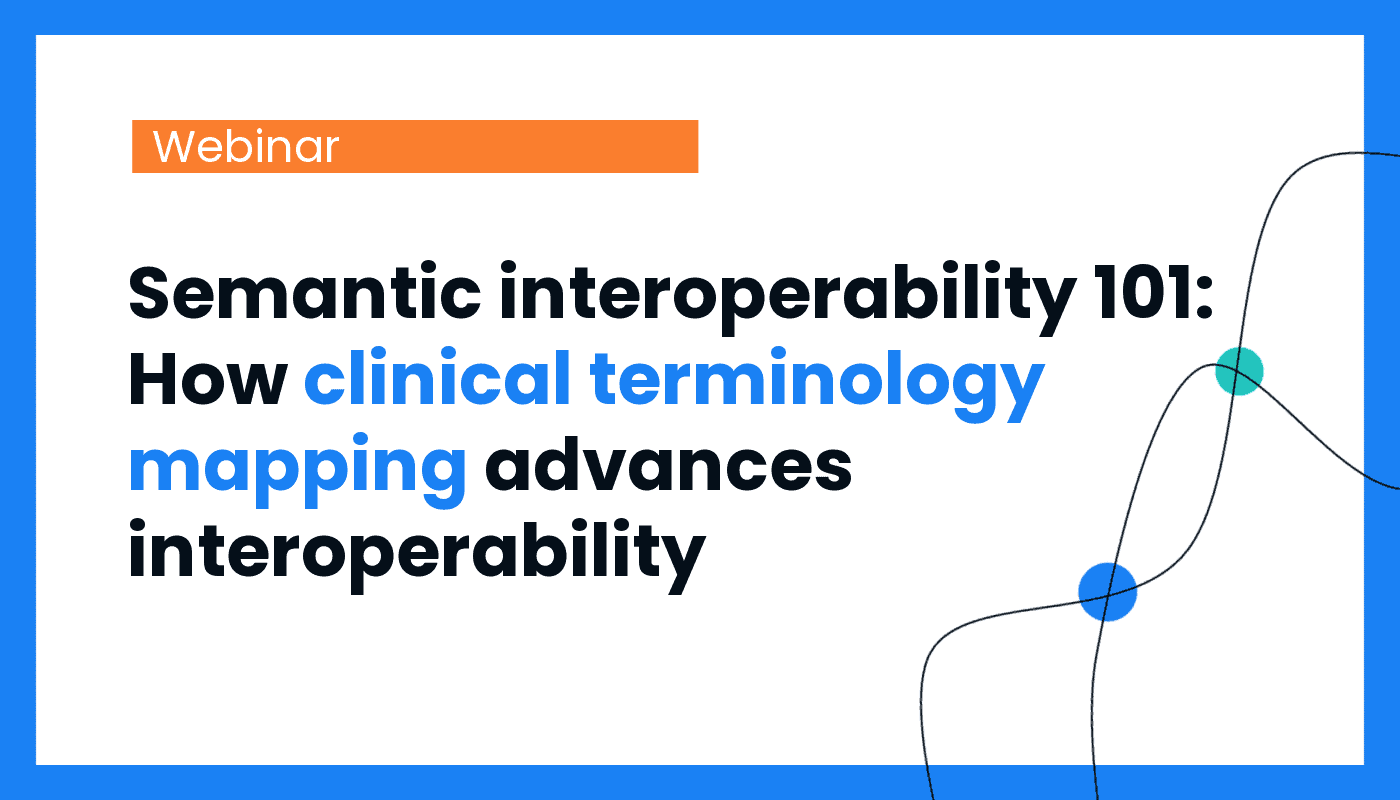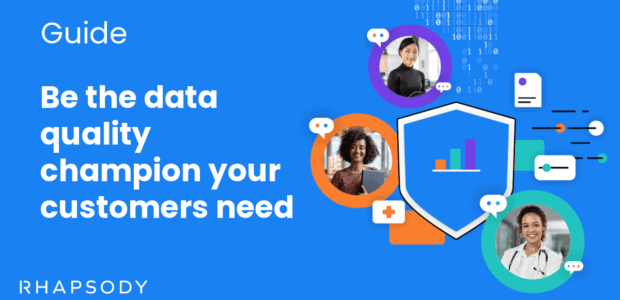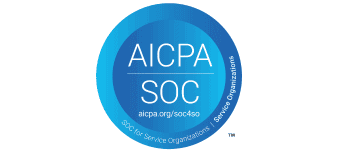Healthcare semantic interoperability solutions
Translate improved data quality into operational excellence
Do more with your data in less time with tools and services designed to manage the breadth and complexity of healthcare code set requirements. With decades of experience, Rhapsody Semantic enables data and informatics teams around the globe to accommodate clinical expression and deliver actionable data insights that drive outcomes.
Talk to an expert
Customer-proven results
Customers explain how Rhapsody Semantic enables terminology management for semantic interoperability.
“Terminology is complicated, but your solution doesn’t have to be. Rhapsody Semantic simplifies our customers’ terminology management so they can focus on what is important to them – patients.”
Lou Larocca
President & CEO at J2 Interactive
“Rhapsody is a key trusted partner of Manifest MedEx (MX) in our work of delivering health data for more than 25 million Californians. . . . Semantic has grown with MX and supported our needs as they have evolved over our long relationship. “
David Kates
former Chief Technology Officer at Manifest MedEx
“Rhapsody Semantic helps to solve interoperability issues by turning disparate clinical terminology across a vast number of records into structured formats that can be easily processed by IT systems. DNV is proud to team up with Rhapsody to rapidly scale this technology in the market.”
Stephen McAdam
Managing Director, Digital Health, DNV

Assemble & manage more complete & accurate patient information
Overcome healthcare interoperability challenges, clinical presentation requirements, and resolve fractured, non-standard data issues.
Normalize data across disparate systems
Normalize, standardize, and map to recognized standards, such as United States Core Data for Interoperability (USCDI).
Create a single source of truth
Semantic provides the single source of truth for standard (and local) content to reference for normalization.
Deploy and connect with flexibility and scalability top of mind
Easily integrate Semantic into your existing applications using a library of over 90 APIs.
Semantic Terminology Management
Learn more about the flexibility and scalability of Semantic terminology management, including subsets, mapping, standardization, normalization, workflow review, and integration
Read moreSave time managing standard content
Rhapsody Semantic loads and maintains globally used code sets, value sets, and mappings to support your interoperability journey out-of-the-box
Read more
Healthcare delivery organizations
Improve clinician satisfaction while increasing revenue in your complex healthcare environment with the ability to translate clinical documentation to standardized code sets.
Laboratory clinics
Enable LOINC mappings for improved data sharing with hospitals, health systems, and departments of health.

Diagnostic imaging centers
Simplify interpretation and sharing of diagnostic reports to save time spent planning care across the continuum.

Ambulatory clinics
Improve clinician retention and patient engagement by enabling access to best-of-breed apps and devices that integrate clinical data seamlessly with the EHR.

Health technology solutions
Deliver data-driven solutions more quickly and create operational efficiency that differentiates you from the competition.

Public health
Spend more time on driving population health outcomes with data than standardizing and cleaning the data, regardless of the source and destination systems.

Health information exchanges
Facilitate accurate data exchange at scale in support of your partners’ goals.

Payers
Reduce the manual effort and potential for inaccurate claim payment associated with inaccurate clinical code set data.
Webinar
Semantic interoperability 101: How clinical terminology mapping advances interoperability
Learn how terminology management solutions advance healthcare interoperability by improving data quality.

New and noteworthy
Insights, guides, and use cases from the world’s healthcare interoperability experts
View resources
Article
Bridging the Gap: Medical Data Standardization and Data Quality
As the healthcare industry evolves, prioritizing medical data standardization will be a necessary step in ensuring safe and effective patient care delivery.
Read more >
Article
An efficient and automated approach to managing LOINC code standardization
Measuring data quality in healthcare with the Rhapsody Semantic Data Assessment. Improve data quality with a sustainable approach to clinical terminology management.
Read more >
Guides
Be the data quality champion your customers need
Learn how a proactive approach to data quality helps you differentiate your solutions in a crowded market and deliver value faster to your customers.
Read more >Data security is patient safety
Rhapsody® health solutions are trusted by 1,700+ healthcare organizations around the world, in part because of our commitment to data privacy and security. We have experience complying with complex regulations around the world. In addition to HIPAA and GDPR, there are country-, region-, provincial-, and state-specific regulations and certifications that we stay on top of to ensure compliance for ourselves and our customers.




Talk to the semantic interoperability experts today
Ready to discuss your code set data challenges? Let’s discuss how we can help you achieve semantic interoperability.
